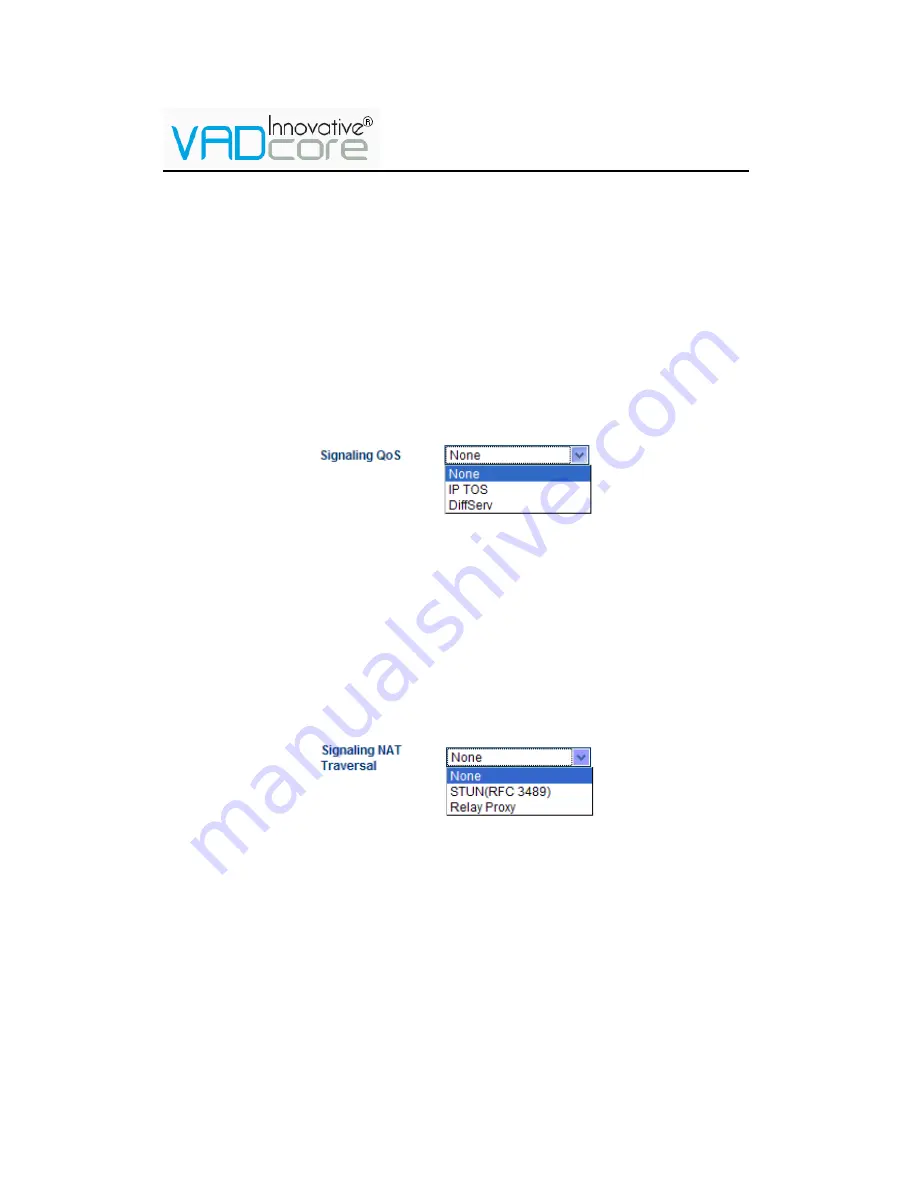
One-Channel GSM VoIP Gateway
22
send to the called party as part of the voice signals. This method is not reliable since the
quality of the DTMF signals is subject to the Codec used and the quality of the networkt.
For
Outband
DTMF type, DTMF signals are independently translated and sent to the
called party. After receiving DTMF signals, the called party translates and interpret
based on the DTMF protocol. This method allows more reliable DTMF signaling.
However, it requires the called party to support this feature in order for this to work
properly. GoIP1 Gateway supports both RFC2833 and SIP INFO DTMF protocols.
2
)
)
)
)
DTMF Payload Type
DTMF Payload Type is defined by RFC2833 protocol to carry the tone definitions for
various applications. The default DTMF Payload Type is 101. Please consult your VoIP
service provider for the proper setting if required.
C
)
)
)
)
Signaling Qos
Signaling QoS improves the performance of SIP signaling. If local network device
supports Qos, select this field accordingly. Please consult your network administrator for
further information.
D
)
)
)
)
Signaling Encryption
GoIP1 Gateway supports different encryptions for SIP signaling. Select the one that you
prefer.
E) Signaling NAT Traversal
Signaling NAT traversal may be required if the GoIP1 Gateway is put behind a
NAT/firewall (or multiple NATs/firewalls). Depending on your network environment and
SIP Server capabilities, this feature may or may not be turned on.
1
)
)
)
)
None
Select
None
to turn off this feature.
2
)
)
)
)
STUN (RFC 3489)
STUN (Simple Traversal of UDP (User Datagram Protocol) through NATs (Network
Address Translators)) is a network protocol allowing a client behind a NAT (or
multiple NATs) to find out its public address, the type of NAT it is behind and the
internet-side port associated by the NAT with a particular local port.
Select STUN (RFC 3489) to use a STUN server for Signaling NAT Traversal. Enter the IP
Address or the domain name of the STUN server to be used.
2) Relay Proxy
















































